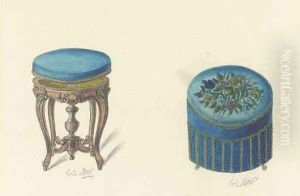Pieter Schipperus Paintings
Pieter Schipperus was a Dutch painter, watercolorist, and illustrator, born on September 9, 1840, in Rotterdam, Netherlands, and died on August 3, 1929. His work is often associated with the second half of the 19th century and the early 20th century, a period that witnessed the evolution of various artistic movements in Europe, including Impressionism and Realism. However, Schipperus's style is more closely aligned with the Realist tradition, focusing on landscapes, cityscapes, and occasionally genre scenes that capture the essence of Dutch life and its environment.
Schipperus received his artistic education at the Academy of Fine Arts in Rotterdam, where he was influenced by the Dutch landscape tradition. This influence is evident in his meticulous attention to detail and his ability to capture the atmospheric nuances of the Dutch countryside. Throughout his career, Schipperus exhibited a profound affinity for the natural world, often incorporating water bodies, rural landscapes, and scenes of daily life in his compositions.
In addition to his paintings, Schipperus was also known for his work as an illustrator. He contributed illustrations to various books and periodicals of his time, which helped to popularize his work beyond the confines of the art world. His illustrations often depicted scenes similar to those found in his paintings, showcasing his consistent interest in the landscape and the everyday life of the Dutch people.
Pieter Schipperus's contribution to Dutch art is marked by his dedication to capturing the beauty and simplicity of the Netherlands. While he may not be as widely recognized as some of his contemporaries, his work provides a valuable insight into the Dutch landscape and cultural heritage of his time. Schipperus's paintings and illustrations remain appreciated by art historians and collectors for their historical value and artistic merit.
